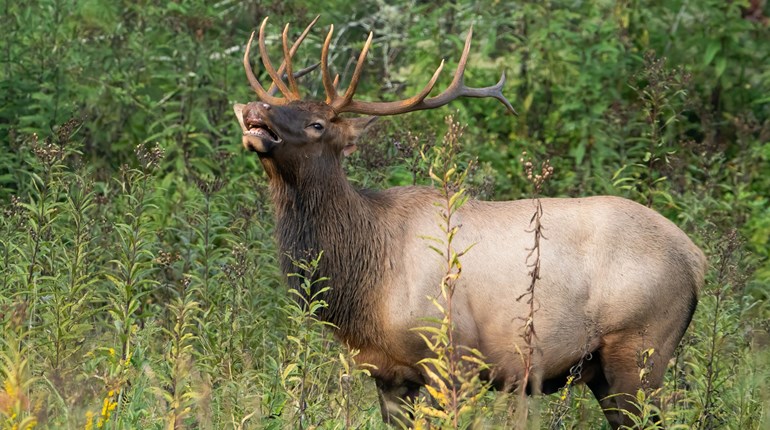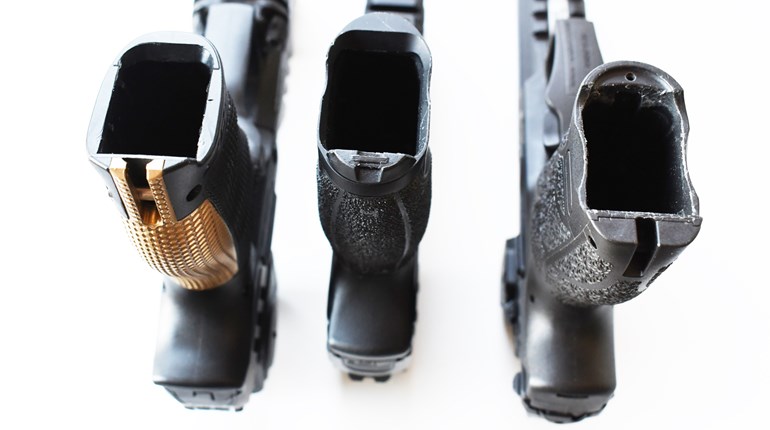
Uncommitted: It’s a winning strategy for the four-legged beast that bugles. Unlike whitetails that have a connection to their home, elk have no misgivings about abandoning a comfortable environment and moving on to a new address. A whim, weather, predators and inevitable hunting pressure all could motivate the moving-van mentality. Bet on your scouting to eventually fail as your hunt progresses.
An area bustling with bulls and reeking of musky elk one day suddenly could be as quiet as a shuttered Toys “R” Us store. Don’t count on an encore return to the woodland stage you scouted prior. Instead, do some moving of your own to relocate elk, and then play it smart when you find them.
Seek the Nasty
“Hiding cover is a feature of habitat that provides elk with security or means of escape from the threat of predators or harassment,” note researchers L.J. Lyons and A.G. Christensen in North American Elk: Ecology and Management. “Like thermal cover, hiding cover usually is some form of vegetation, but it also may be a variety of topographic features.”
In brief, move on to the nastiest, nearby cover to find elk, especially those displaced by hunting pressure. Elk can climb into cliffs you’d think were only accessible by bighorn sheep, and they have no issue with weaving their racks through dog-hair stands of pines. Elements like these should be on your hit list to find ousted elk.
As you scour maps and satellite images on hunting apps, make note of any nasty locations close to meadows, valleys or alpine openings that elk could utilize for feeding. An elk herd may disappear in a blanket of steep, dark timber, but to sustain itself the herd will need to exit its refuge in most environments for grazing opportunities.
Hike Farther
Three miles of travel spanning several canyons through a maze of tight timber could take you all day—that is if you decide to tackle the feat. For elk it’s akin to walking across the street to get a soda at the c-store. Once elk experience a trend of hunter harassment they leave their troubles behind with a lengthy jaunt. Be prepared to follow along.
Your scouting may have been based on summer, roadside observations, but if elk disappear you need to find remote areas closed to motorized access. An absence of marked hiking trails also helps your cause when other hunters ignore the pioneering spirit. Elk welcome deep canyons, river crossings and other environmental obstructions while most hunters dismiss these types of terrain as unfeasible.
If your hunt takes place in reasonable temperatures you may want to stow a bivy bag, extra water and calories in your pack. Stay an extra day once you make the push into the wilds. One of my favorite honey holes takes a half day to access by hiking or horseback. I go light with backpack gear and escape the dust clouds of ATV trails. The elk go light, too, but quickly establish a domicile once they move beyond the drone of the quads.
Look Closer
Hiking farther is usually the answer in elk country, but sometimes elk could be right under your nose. As you speed-scout for signs of the missing ungulates, don’t overlook the obvious. Habitat near highways or even housing developments may hold elk that most hunters simply drive by on their haste to the outback. Several research studies openly point out that elk are comfortable with the byway bustle as long as it doesn’t include personal meet-and-greets with bipedal hunters.
I was reminded of this last fall while chasing public-land elk in Montana. My mantra had always been to find blocks of road-free country and hike to the center to find elk. Then one morning I followed a Boone and Crockett candidate off a mesa and across the busiest county road in the vicinity. For the next three days we played cat-and-mouse within a half-mile of that road. He bugled persistently even as the banging of empty stock trailers echoed from the road below.
Call Reservedly
Other than pulling the trigger or dropping the string, there’s nothing more rousing about elk hunting than calling to a bugling bull. You may have stumbled into a herd that’s never been called to, but don’t bet the farm on it. If a bull responds with definite enthusiasm and a progression toward you, grant yourself permission to call. In most other scenarios put away the call or use it with stern reservation when you relocate elk.
Calling too much can turn off a bull in many ways. First, the bull may have already had the negative experience of running into a hunter as he approached a call. That’s highly likely today as more hunters crowd public land and bump bulls. Just as likely, he may zip a lip to avoid other bulls in an attempt to keep all the ladies for his own.
If a bull really wants to engage he’ll let you know. But even if he doesn’t ramp up in enthusiastic response to your call, it may not be over. He could be approaching in silence. He knows, within a few yards, the spot where the sound emanated, so you don’t have to leave a breadcrumb trail of bugles to your lap. Instead, shut up. Next, look for a terrain feature that will force him upwind into a clear shooting lane. Now take a seat and wait to see if your constrained calling tempted him to come in for a peek.
Become a Stump-Sitter
Finally, your scouting may not have failed at all. The elk may simply be acting like whitetails with a reluctance to move about openly. You may want to take a seat and wait for them to come to you, especially under the cover of a timber canopy.
As North American Elk: Ecology and Management notes, “Trail crossings between drainages are important elk travel routes. These often are located in low saddles and immediately beneath ridge tops. In timbered areas, elk movement often keeps old trails and stock routes open.”
Besides a whitetail-like, trail ambush, you can wait at waterholes in arid country and muddy wallows that elk visit throughout the rut. As elk reclaim their historic footprint across North America they have abandoned many high-country haunts. You may also be able to waylay a wapiti as it visits valley-based agriculture.
I once set up a treestand over a timber-shrouded pond. Late in the afternoon I awoke from a sun-spurred nap to discover a stately 6-point bull wading in for a cool one. He was oblivious to me reaching for my Mathews and drawing an arrow. Minutes later I was beginning a long butchering job. Sitting down in suspect elk country is one tactic I use every season when my scouting fails.


































